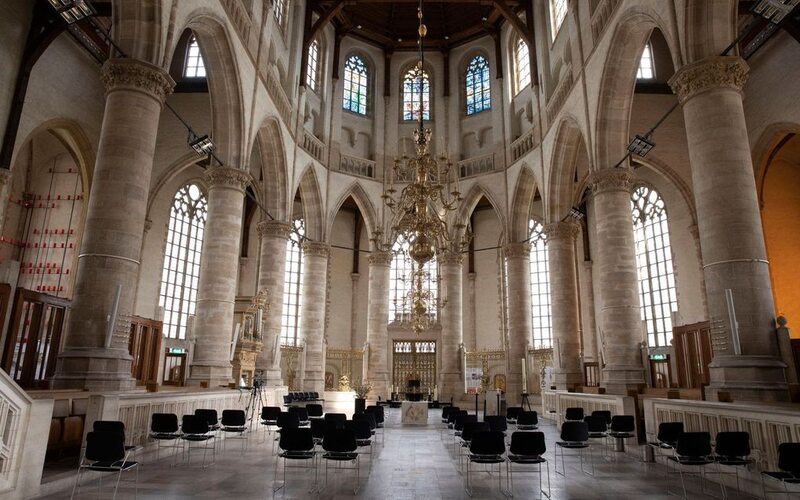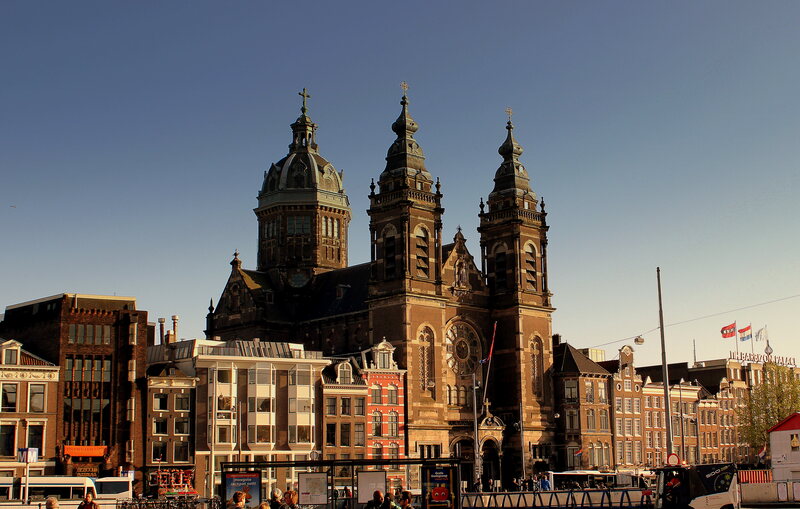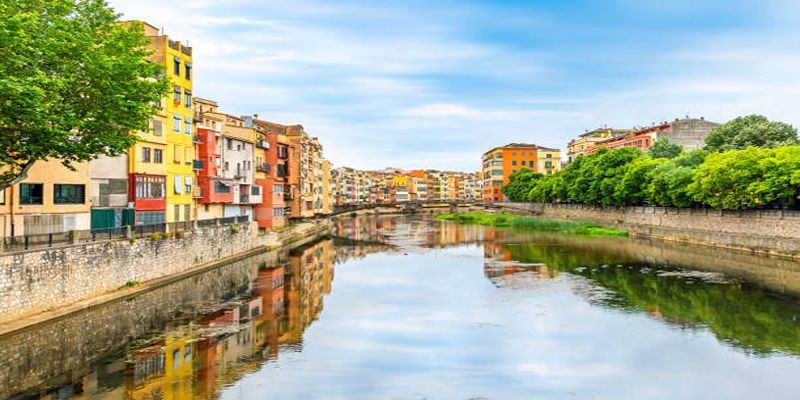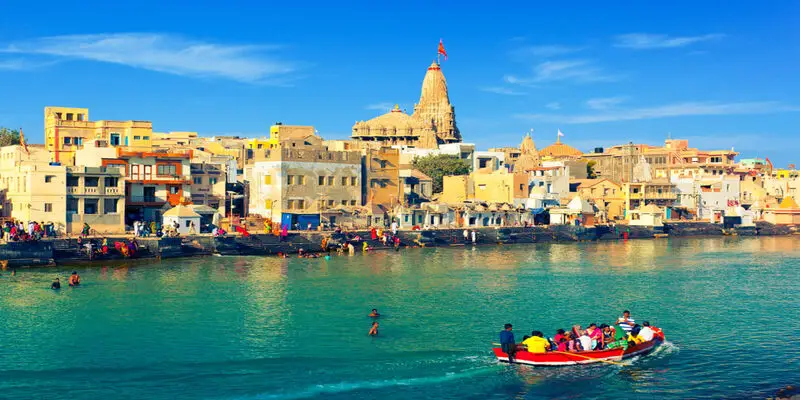10 Churches In the Netherlands Which Offer A Glimpse Of The Ancient Structures Of Europe!
Mar 02, 2024 By Sean William
Known for its picturesque landscapes and cultural heritage, The Netherlands boasts a tapestry of churches. Each one narrates a story from bygone eras. Embark on this journey, and anticipate an intriguing blend of Gothic, and Romanesque. Moreover, Renaissance architectural marvels present themselves with unique tales to tell. Let’s walk you through 10 churches in the Netherlands that will leave you in awe.
1. St. Bavo's Cathedral, Haarlem
The Gothic splendor of St. Bavo's Cathedral in Haarlem beckons you to appreciate more than its exterior. Venture inside and behold a masterpiece, an extraordinary organ crafted by Christian Müller in the 18th century. This grand instrument, celebrated for its exceptional sound, has drawn renowned musicians and composers throughout history. Absorb the resonating melodies within this sacred space and a deeper appreciation for the cathedral's role in the Netherlands' musical heritage will be yours.
Additionally, the cathedral houses an extensive collection of religious art and artifacts. Among the treasures is the impressive 'Banquet of the Officers of the St. George Civic Guard' by Frans Hals, adding an artistic dimension to your visit. This amalgamation of architecture, music, and art creates an immersive experience, showcasing St. Bavo's Cathedral as a multi-faceted cultural and historical gem in Haarlem.
- Note: Don't miss the opportunity to attend one of the cathedral's organ concerts, providing a soul-stirring auditory experience.
- Caution: Photography restrictions may apply inside the cathedral, so be mindful of the rules to respect the sacred atmosphere.
2. Dom Tower, Utrecht
Utrecht's Dom Tower, a symbol of ecclesiastical history, offers not only panoramic views but also a journey through time. Venture into the accompanying Dom Church, and you'll encounter the Pandhof garden, a tranquil oasis adjacent to the cathedral. This serene courtyard, with its medieval ambiance, provides a peaceful escape from the bustling city and a unique perspective on the religious life that once thrived around the Dom Tower.
Delve further into the crypt of the Dom Church. Archaeological finds there lay bare layers of history from Roman times to the present day. Serving as an absorbing underground museum, this crypt, remarkably, complements with its soaring heights, the tower’s majestic grandeur. Through comprehensive exploration, you are certain to uncover Utrecht's skyline, not just its visible beauty but also those hidden narratives beneath cobblestone streets.
- Consideration: Check the opening hours of the Dom Church and crypt, as they may differ from the Dom Tower's schedule.
- Fact: The Dom Tower's construction began in the 13th century and continued over several centuries, contributing to its diverse architectural styles.
3. Laurenskerk, Rotterdam
More than just its architectural charm beckons from Rotterdam's Laurenskerk, a testament to the city's post-World War II resilience. Delve into the church's archives. Records meticulously detail its reconstruction and illuminate the collective effort that resurrected Rotterdam after extensive wartime destruction. The church, now an emblem of rebirth, poignantly reminds us how Rotterdam rose from ashes, boldly embracing a new era.

The Laurenskerk, a dynamic space bridging history and contemporary expression, actively hosts cultural events. If you attend an art exhibition or concert within its hallowed halls, the church symbolizes Rotterdam's perpetual renewal by continuing to evolve.
- Noteworthy: The Laurenskerk frequently collaborates with local artists, adding a modern and vibrant touch to its historical setting.
- Fact: The church's original construction dates back to the late 15th century, making it a witness to over five centuries of Rotterdam's history.
4. Oude Kerk, Amsterdam
The Oude Kerk of Amsterdam, the oldest building in the city, reveals more than just its historical significance. It presents a fascinating fusion of sacred and secular elements. Venture onto the church's floor, bedecked with tombstones, to uncover Amsterdam's social fabric over time. Every stone narrates a tale. From distinguished citizens to ordinary individuals, each provides an unparalleled view into the manifold history that defines this metropolis.
The Oude Kerk, in addition to its historical role as a church, also acts as a contemporary art venue. It hosts exhibitions that skillfully contrast the ancient with the avant-garde. Modern installations provoke dialogue and debate against the backdrop of medieval architecture, thereby bridging centuries within this sacred space, truly embodying timelessness.
- Consideration: Guided tours are available to delve deeper into the historical and artistic layers of the Oude Kerk.
- Caution: Respect the church's solemnity and be mindful of ongoing religious services when visiting.
5. St. John's Cathedral, 's-Hertogenbosch
The 's-Hertogenbosch's St. John's Cathedral, an exemplar of Brabant Gothic architecture, captivates not only with its exterior but also conceals a trove of intriguing details within. The cloisters encircling the cathedral tell biblical stories through unique sculptures. Explore these and you will feast your eyes on intricately carved masterpieces that provide insights into the religious narratives woven into this architectural marvel.
The cathedral further presents a rich collection of liturgical objects and artifacts. Silver and gold treasures, which exhibit the craftsmanship of medieval artisans, are a sight to marvel at. As you visit St. John's Cathedral, your experience evolves into an exploration of the material culture of the church. It unveils not only its opulence but also its deep-seated devotion.
- Fact: The cathedral's construction spanned centuries, reflecting evolving architectural styles from the 14th to the 16th century.
- Noteworthy: Attend one of the guided tours to gain a deeper understanding of the cathedral's historical and artistic significance.
6. Grote Kerk, Breda
The imposing facade of Breda's Grote Kerk serves as a canvas, intertwining the narratives of the Nassau family and its political and religious roles within the church. A unique perspective on power's intersection with faith is offered through exploration into these tombs housing Nassau's ancestors. The elaborate sepulchers establish tangible connections to the Netherlands' tumultuous history.
The Grote Kerk, in addition to its grandeur, harbors a remarkable array of stained glass windows. Each one narrates a unique story, depicting biblical scenes and historical events. These vibrant chronicles not only enrich your exploration with visual storytelling but also reveal intricate details. They are integral elements that underscore the Grote Kerk's significance within Dutch history.
- Caution: Some areas of the church may be restricted due to ongoing restoration work, so plan your visit accordingly.
- Consideration: Attend a local event or concert hosted in the Grote Kerk to experience its acoustics and cultural vibrancy.
7. St. Nicholas' Church, Amsterdam

Near the Central Station, Amsterdam's St. Nicholas' Church proudly stands. Its Neo-Baroque design not only serves as a remarkable piece of architecture but also tells an engaging story of Catholic history. If you delve into the church's archives, you will uncover evidence. It survived during a period marked by religious tensions in the Netherlands. The history of St. Nicholas' Church, mirroring Amsterdam’s commitment to tolerance, serves as a testament to religious diversity and coexistence.
Moreover, an impressive organ within the church's interior adds a musical dimension to your visit. Its resounding notes permeate through the nave. This creates an auditory experience, a powerful enhancement of your exploration of this historical gem.
- Fact: St. Nicholas' Church was consecrated in 1887, marking a revival of Catholicism in Amsterdam.
- Noteworthy: The church often hosts choir performances and organ recitals, offering visitors a chance to immerse themselves in its musical heritage.
8. Pieterskerk, Leiden
Leiden's Pieterskerk, intertwined with the city's academic roots, reveals a captivating narrative beyond its medieval architecture. Visit the Pilgrim Fathers' burial vault, a solemn space commemorating the founders of Plymouth Colony in America. This historical connection transforms the church into a pilgrimage site for those interested in the roots of the Mayflower story.
Further, delve into the Pieterskerk's stained glass windows. Each narrates a unique tale. These vibrant depictions, not only add an artistic touch to the church but also offer glimpses into Leiden's historical context of religion and culture to shape our understanding of its history.
- Consideration: Plan your visit to coincide with events or lectures hosted in the Pieterskerk to experience its role as a cultural and academic venue.
- Fact: The Pilgrim Fathers sought refuge in Leiden before their journey to the New World, making the Pieterskerk a significant part of American history.
9. Grote of Sint-Michaëlskerk, Zwolle
Zwolle's Grote of Sint-Michaëlskerk, an imposing church showcasing Gothic and Romanesque elements, stands as a historical venue beyond its architectural allure. Attend one of the church's concerts, and you'll experience the acoustics that make it a sought-after location for musical performances. The Grote Kerk transforms into a space where the sounds of the past and present harmonize, providing a unique auditory perspective on its rich history.
Ascend the steps to explore the church's tower. You'll be rewarded with a breathtaking panorama, a visual connection to Zwolle and its surroundings that influenced the construction of this edifice.
- Noteworthy: The Grote Kerk's tower is accessible through guided tours, providing historical insights along the way.
- Fact: The church's foundation dates back to the 15th century, making it a witness to Zwolle's medieval history.
10. Martinikerk, Groningen
Groningen's Martinikerk, a symbol of the city's resilience against religious turmoil, unfolds its narrative through more than its Renaissance organ. Venture into the church's library, housing a collection of rare books and manuscripts, offering a glimpse into the intellectual history that shaped Groningen. This hidden treasure trove transforms your visit into a journey through the written word, connecting the church to the broader cultural and academic context.
Explore further the Martinikerk's northern transept. There you will encounter the Arp Schnitger organ, a renowned Baroque masterpiece for its exceptional sound quality. This addition, notably adding a unique musical dimension, enhances your exploration of the church.
- Caution: Some areas of the church may be closed during services or events, so plan your visit accordingly.
- Fact: The Martinikerk's construction began in the 13th century, making it a witness to Groningen's medieval and post-medieval history.
To wrap it all up…
Embark on this immersive exploration, and let the churches of the Netherlands unveil the layers of Europe's ancient structures, narrating tales of faith, art, and resilience. These are churches and structures that will be imprinted on your mind forever.





